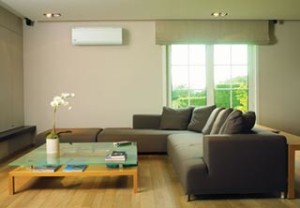 An HVAC system utilizing ducts to move air from the outside compressor to the inside of the house has been the traditional air conditioning system for decades now. However, this method of heating and cooling a house or other building has some serious drawbacks: loss of efficiency, wear over time, and, namely, the high degree of maintenance in the form of duct cleaning. A ductless system, on the other hand, entirely removes from your HVAC system the need for duct cleaning.
An HVAC system utilizing ducts to move air from the outside compressor to the inside of the house has been the traditional air conditioning system for decades now. However, this method of heating and cooling a house or other building has some serious drawbacks: loss of efficiency, wear over time, and, namely, the high degree of maintenance in the form of duct cleaning. A ductless system, on the other hand, entirely removes from your HVAC system the need for duct cleaning.
A ductless system, or a split system, is one that separates the noisy, outdoor compressor unit from the condenser coils which actually cool the air. In the ductless system, the condenser coils are located on units that are placed in each room where the air conditioning is needed. Refrigerant is cooled outside at the main compressor unit, and then travels through narrow lines to the individual wall units, which then circulate the air in the room while cooling it down simultaneously.
This system’s substitution of ducts for much smaller, air-tight tubes makes this system more efficient at the same time as eliminating the need for duct cleaning. There is no need for any filters to guard against outdoor contaminates entering the system. There are no ducts on which leaks can spring, as happens in a traditional duct system.
Ductless systems don’t only eliminate the need for duct cleaning though; they also greatly increase the efficiency of the air conditioning system. Traditional ducts transfer large amounts of heat from or into the air that travels through them on the way to the destination, making the entire system work harder and raise your electric bill. Ductless systems, with only refrigerant moving through small, insulated lines, are much more efficient in this manner. Also, the wall units are remote controlled, allowing you to determine exactly how warm or cool you want each individual room to stay; each room can be set to simultaneous, different temperatures.






